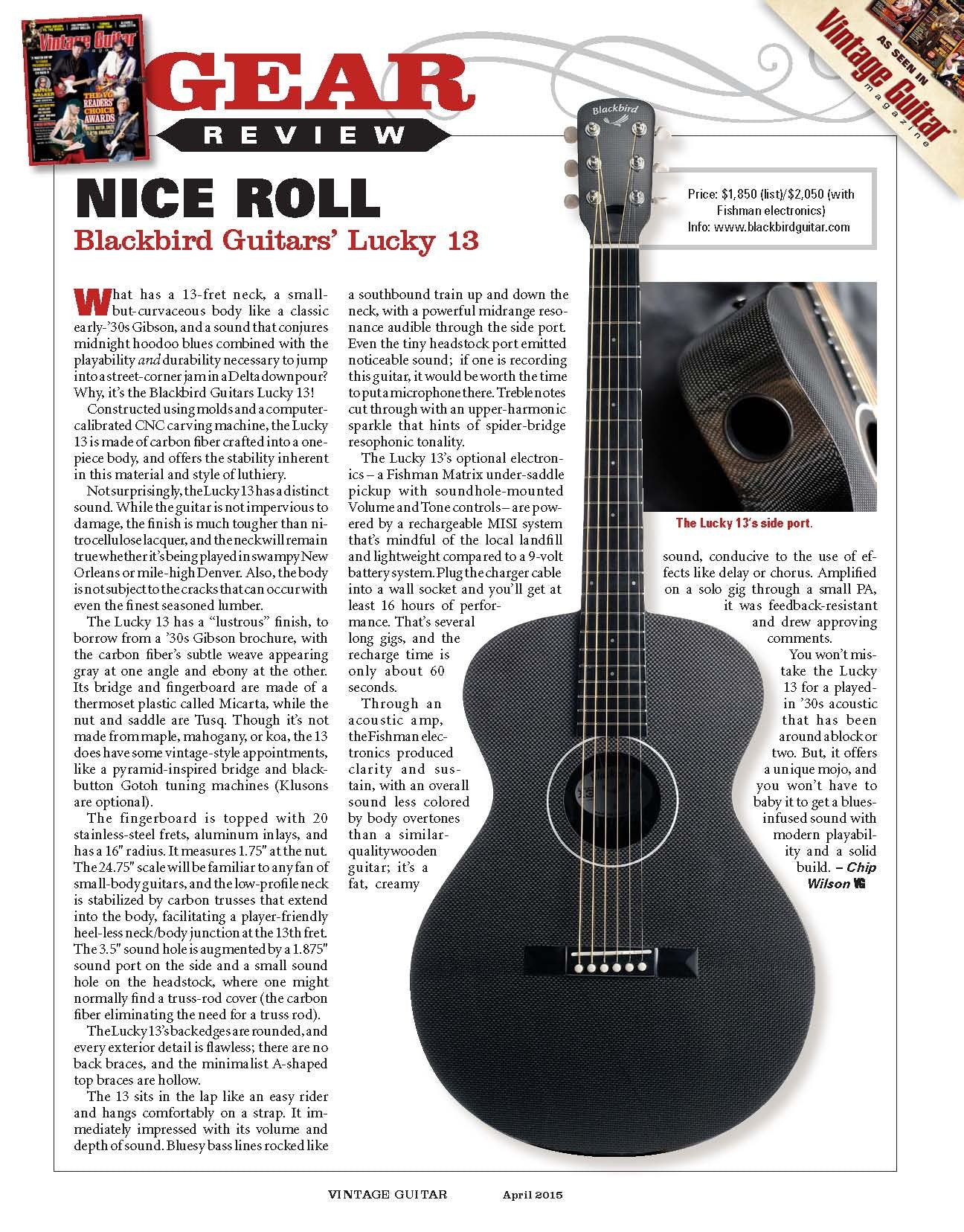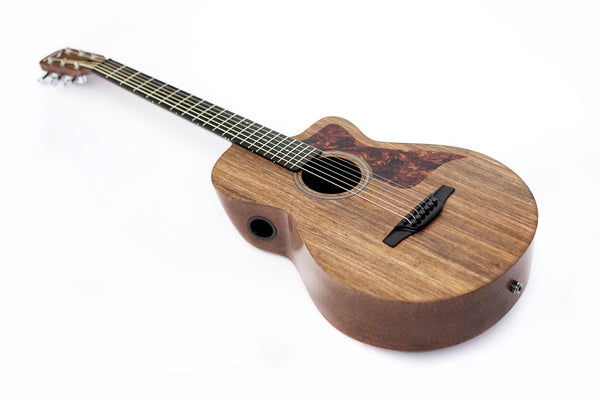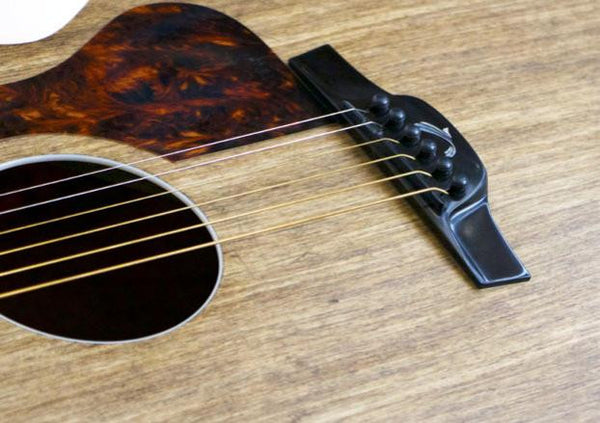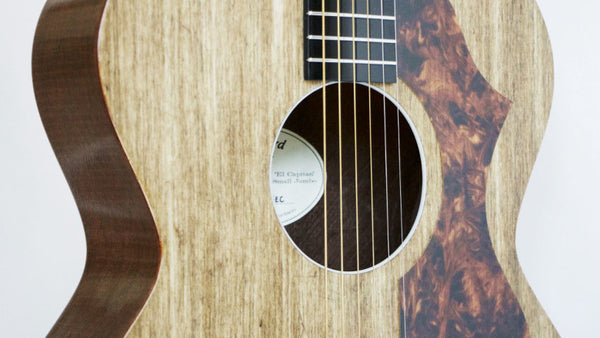What has a 13-fret neck, a small but curvaceous body like a classic early ’30s Gibson, and a sound that conjures midnight hoodoo blues combined with the playability and durability necessary to jump into a street-corner jam in a Delta downpour? Why, it’s the Blackbird Guitars Lucky 13! Constructed using molds and a computer calibrated CNC carving machine, the Lucky 13 is made of carbon fiber crafted into a one piece body, and offers the stability inherent in this material and style of luthiery.
Not surprisingly, the Lucky 13 has a distinct sound. While the guitar is not impervious to damage, the finish is much tougher than nitrocellulose lacquer, and the neck will remain true whether it’s being played in swampy New Orleans or mile-high Denver. Also, the body is not subject to the cracks that can occur with even the finest seasoned lumber.
The Lucky 13 has a “lustrous” finish, to borrow from a ’30s Gibson brochure, with the carbon fiber’s subtle weave appearing gray at one angle and ebony at the other. Its bridge and fingerboard are made of a thermoset plastic called Micarta, while the nut and saddle are Tusq. Though it’s not made from maple, mahogany, or koa, the 13 does have some vintage-style appointments, like a pyramid-inspired bridge and black button Gotoh tuning machines (Klusons are optional).
The fingerboard is topped with 20 stainless-steel frets, aluminum inlays, and has a 16" radius. It measures 1.75" at the nut.The 24.75" scale will be familiar to any fan of small-body guitars, and the low profile neck is stabilized by carbon trusses that extend into the body, facilitating a player-friendly heel-less neck/body junction at the 13th fret. The 3.5" sound hole is augmented by a 1.875" sound port on the side and a small sound hole on the headstock, where one might normally find a truss-rod cover (the carbon fiber eliminating the need for a truss rod).
The Lucky 13’s back edges are rounded, and every exterior detail is flawless; there are no back braces, and the minimalist A-shaped top braces are hollow.
The 13 sits in the lap like an easy rider and hangs comfortably on a strap. It immediately impressed with its volume and depth of sound. Bluesy bass lines rocked like a southbound train up and down the neck, with a powerful midrange resonance audible through the side port. Even the tiny headstock port emitted noticeable sound; if one is recording this guitar, it would be worth the time to put a microphone there. Treble notes cut through with an upper-harmonic sparkle that hints of spider-bridge resophonic tonality.
The Lucky 13’s optional electronics –a Fishman Matrix under-saddle pickup with soundhole-mounted Volume and Tone controls– are powered by a rechargeable MISI system that’s mindful of the local landfill and lightweight compared to a 9-volt battery system. Plug the charger cable into a wall socket and you’ll get at least 16 hours of performance. That’s several long gigs, and the recharge time is only about 60 seconds.
Through an acoustic amp, the Fishman electronics produced clarity and sustain, with an overall sound less colored by body overtones than a similarquality wooden guitar; it’s a fat, creamy sound, conducive to the use of effects like delay or chorus. Amplified on a solo gig through a small PA, it was feedback-resistant and drew approving comments.
You won’t mistake the Lucky 13 for a played in ’30s acoustic that has been around a block or two. But, it offers a unique mojo, and you won’t have to baby it to get a blues infused sound with modern playability and a solid build.
-Chip Wilson VG




